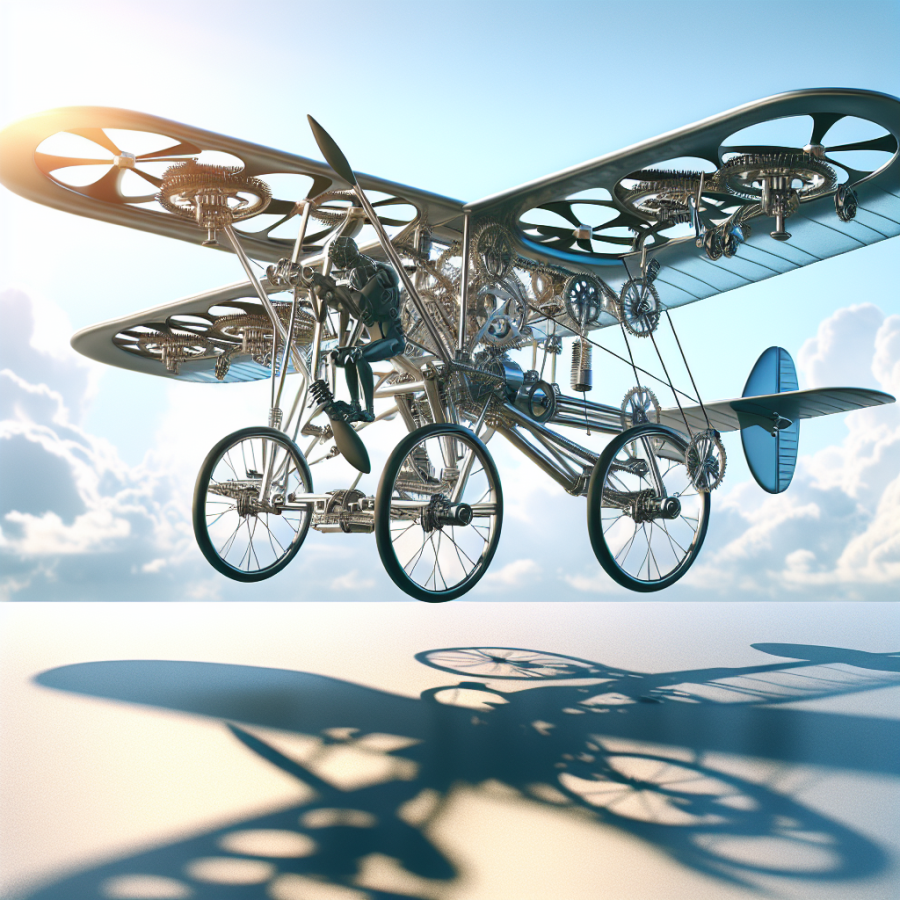The Rise and Challenges of Human-Powered Aircraft Designs
Human-powered aircraft (HPA) design is an area of aerospace engineering that has linked the ingenuity of mechanical design with the physical prowess of its pilots. These innovative aircraft are solely propelled by the muscle power of their pilots, often via a pedaling mechanism similar to that of bicycles. The quest for human-powered flight has been driven by the desire to push the boundaries of what is possible with lightweight materials, aerodynamics, and human endurance.
The inception of the idea of human-powered flight can be traced back to the aviation pioneers of the early 20th century. However, it wasn't until the 1970s that the first successful controlled flight of a human-powered aircraft was achieved with the Kremer Prize-winning Gossamer Condor. This achievement demonstrated that with the right combination of lightweight materials and efficient propulsion and lift mechanisms, human-powered flight could become a reality.
Since then, the field of HPA design has experienced tremendous growth, driven primarily by advancements in materials science and aerodynamic understanding. The utilization of carbon fiber composites, for instance, has allowed designers to create frames that are both strong and extraordinarily light, a crucial factor in HPA design since the aircraft must be light enough to be lifted and propelled by human power. Computational Fluid Dynamics (CFD) has also provided deeper insights into optimizing aerodynamic performance, further improving the efficiency of these remarkable aircraft.
However, while the design and construction of HPAs have advanced, they face several critical challenges. One of the main challenges is the limitation of human power. Even the fittest athletes can only produce a sustained power output of around 300 to 400 watts. This limited power input constrains the size, weight, and overall design of the aircraft. As a result, designers must constantly strive to reduce drag and enhance efficiency to maximize the distance and duration that HPAs can achieve.
Another challenge is the issue of control and stability. Human-powered aircraft are inherently lightweight, which makes them susceptible to environmental disturbances such as wind gusts. Balancing the aircraft's stability with the need for it to be lightweight adds complexity to the design process. Pilots must also possess significant skill and stamina to maintain control while continuously exerting the physical effort required to keep the aircraft aloft.
Moreover, the practical applications of human-powered aircraft remain limited. They are primarily experimental and serve as a platform for engineering challenges and educational purposes.
Read also:
Frisian Handball: A Traditional Sport's Impact and Rules
Engineering Marvels in Human-Powered Aviation
Human-powered flight represents one of the most challenging and innovative sectors within the realm of aeronautics. Pioneers in this field strive to design and build aircraft that are powered solely by the physical strength and endurance of an individual. The quest for human-powered flight has not only pushed the boundaries of engineering and materials science but also serves as a testament to human determination and ingenuity.
One of the most prominent engineering marvels in this domain is the Gossamer Albatross, which etched its name in history by completing a successful flight across the English Channel on June 12, 1979. Piloted by amateur cyclist Bryan Allen, the Gossamer Albatross was powered by pedaling, transforming human energy into aerodynamic lift and thrust. Its lightweight design utilized state-of-the-art materials such as carbon fiber composites, which provided strength without the penalty of added weight.
The design principles behind human-powered aircraft are governed by meticulous optimization of power-to-weight ratios, aerodynamic efficiency, and pilot endurance. Engineers have also delved into advancing propulsion mechanisms, which have evolved from simple bicycle-like chains and gears to sophisticated systems that harness the full potential of the pilot's power output.
Materials have also played a crucial role in the evolution of human-powered aircraft. The utilization of ultra-light yet strong materials has made considerable strides forward, with innovations in carbon fiber and high-strength polymers. These materials not only reduce the overall weight but also allow larger wing spans, which are crucial for maintaining lift with minimal power input.
Beyond the frame and propulsion, the aerodynamic design also challenges engineers to minimize drag. Crafting seamless joints, sleek fuselages, and efficient wing profiles are all central to maximizing performance. Modern computational methods and wind tunnel testing have paved the way for designs that can defy previously perceived limitations of human-powered flight.
Training and selection of the pilot are equally critical components. Due to the sheer physical demand, pilots are typically selected for their endurance capabilities as much as their piloting skills. Training regimens akin to those of elite cyclists are employed to ensure that pilots can sustain the necessary power output for the duration of the flight.
Recent advancements in human-powered aviation are not just limited to achieving longer and more complex flights; they also encompass educational and competitive aspects. Competitions such as the Icarus Cup in the UK encourage innovation and participation in human-powered aviation, providing a platform for engineers and enthusiasts to showcase their skills and push the frontiers of what’s possible.




